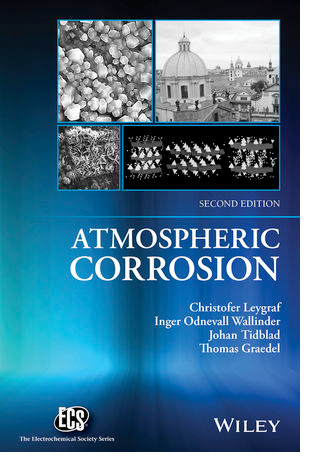Atmospheric Corrosion
A text book in Atmospheric Corrosion is available from John Wiley & Sons.

Learn more about Atmospheric Corrosion
The book highlights the most important aspects of atmospheric corrosion processes of metal and alloys and of the link to atmospheric chemistry. It is written on an undergraduate level for non-experts in the area.
Buy the book
The main chapters of the book are listed below:
- The many faces of atmospheric corrosion
- A conceptual picture of atmospheric corrosion
- A multiregime perspective on atmospheric corrosion chemistry
- Atmospheric gases and their involvement in corrosion
- Atmospheric particles and their involvement in corrosion
- Corrosion in laboratory exposures
- Corrosion in indoor exposures
- Corrosion in outdoor exposures
- Advanced stages of corrosion
- Environmental dispersion of metals from corroded outdoor constructions
- Applied atmospheric corrosion: Electronic devices
- Applied atmospheric corrosion: Automotive corrosion and corrosion in the road environment
- Applied atmospheric corrosion: Alloys in architecture
- Applied atmospheric corrosion: Unesco cultural heritage sites
- Scenarios for atmospheric corrosion in the twenty-first century
- Appendixes
